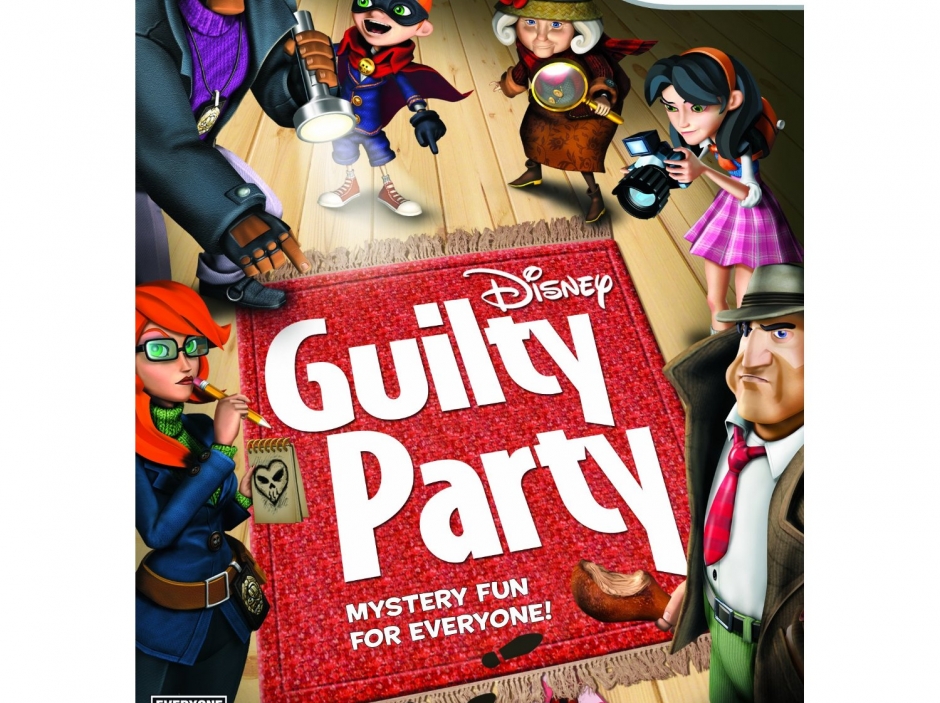Mix one part classic board game "Clue" with a healthy dose of Mario Party, and a bit of animated Carmen Sandiego and, unfortunately, you get a game resulting in a hung jury.
On the plus side, Disney's Guilty Party, is a game that does require players to find clues, and reason from those clues who committed the crime. For instance, was it a man, a woman? Tall or short, Fat or thin? Once you assemble the clues, you make an accusation and the game requires you to match clues to proof required to snag the perpetrator. This requires reading and logic.
Therefore, even before we consider any other evidence, Guilty Party provides requires more mental skills than most arcade and action pap you'll find on the Wii. Bravo to Disney for understanding that fun and thought are not mutually exclusive. Of course, this has been the basis for most board games since the Egyptians invented the game of Senet thousands of years ago. Still, the thought that kids might want to think is anathema to most video game companies, so Disney deserves our support and thanks.
The basic investigation tools that kids use is also pretty interesting. Each witness will give you some bit of evidence. However, they don't always tell the truth. A built in lie detector will let you know when they are lying, but you have to remember to use it. You also must keep in your memory that the "fact" that shows up in your notebook might be "false". This is a nice twist on other detective games, and keeps you thinking.
The game's sense of humor, squarely on the mark for tweens, is also a plus. On the other hand, some of the stereotypes, particularly the muscle-bound black character with a Mike Tyson lisp seemed anachronistic and unnecessarily offensive.
To recap, we have a generally funny game that requires kids to think. So where did things go wrong?
To gather clues players take turns moving about various settings. You gather virtual cards that give you special abilities, and points that let you keep investigating. The mechanism, though based on board games, is much less clear. How are those points spent? Is when you search for clues, move to a different room? Without a full explanation of the mechanics, there isn't much a player can (or needs to do) to strategize. The mechanism seems more like window dressing to remind us of a board game than an actual element of play. Ok, no harm, no foul.
Gathering clues, on the other hand, is accomplished through oft-seen mini-games. Wiggle the controller to dust off hidden objects, light a dark room, pop a balloon, tickle a character. Some of the activities are ridiculously simple, almost placeholder. Others require such fast control as to be nearly impossible. None of them have much to do with the logic aspect of the game. They just stretch out the action, introducing a game element that suggests that the designers didn't trust the detective aspects of the game to keep the players' attention.
Things really break down with the puzzle solving system. In the board game Clue, players can leap to accuse at any time, if they think they are ready. Here you can only solve the puzzle if the game feels you have enough clues. In Clue, for instance, you choose when you have deduced the person, place, and method of the crime, based upon observed clues and suspects. Here, you might know who the bad guy is (the only one with a bow-tie) for instance, but not be able to solve the mystery because the game doesn't feel you have enough evidence.
Guilty Party has noble intentions and gets a lot right. Unfortunately, the game's mechanics minimize the sleuthing in favor of silly wiggle-the-wiimote activities. By not trusting kids to be interested in using their brains, Disney is guilty of producing a program that is "just ok".



